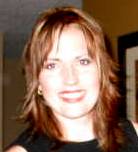See Marnee and TinyEYE at ASHA 2008 in Chicago!!
Marnee’s Presentations at ASHA:
Friday, November 21 9:30-10:30am: Speech Therapy Telepractice: Efficiencies, Efficacy, & Ethics (Session #0410)
Friday, November 21 at 2:00-3:00pm: Addressing Rural Populations & the Speech-Language Pathologist Shortage With Telepractice (Session #0414)
Visit Booth # 472 and Say Hello!
Letting your mind play is the best way to solve problems.
Bill Watterson
Helping children enrich their lives by expanding their speech and language skills is on my list of favourites. I use all sorts of strategies and tools to make a difference for them. So far – the best trick ever has been to … play. It has been a pleasure to co-create engaging games for speech therapy telepractice with my work at TinyEYE. Many of these games were inspired by my playtime with children who were my clients. Playing involves a number of cognitive, social, and communication skills which can be further developed by more play! A good first step is to gain a general understanding of how play develops. I have included a milestone list for your review. Upcoming blogs will provide specific tips for supporting play development with the goal of enriching lives.
Year 1
4 months
– Gaze at and touch items
– Vocalize to peers and adults
– Provide toys that the baby can look at, listen to, chew on, and shake, grab and kick
6- 9 months
– A true social smile has emerged
– Takes turns with making sounds back and forth
– Enjoys social games such as peek-a-boo
– Children approach, follow, and reach for adults and peers
– Provide toys that react to the baby’s manipulation, such as a toy that lights up and makes noise, that pops back up when pushed over, or that they can bang together
9-12 months
– Aware that objects exist when not seen – will look for an toy that dropped out of sight
– Children offer and take items
– Brings a toy that he or she wants you to play
– May start a game of peek-a-boo or pat-a-cake
– Provide toys that can be put places, such as stacking rings, shape/block sorter. Also, provide musical instruments, such as pots to bang, bells to shake, and keys to press.
Have a great day!
If a school district in your area needs Speech-Language Pathologists, please let me know by email as we at TinyEYE can help!


Marnee Brick, MSc
Speech-Language Pathologist and Director of of Speech Therapy
TinyEYE Therapy Services (Speech Therapy Telepractice)


